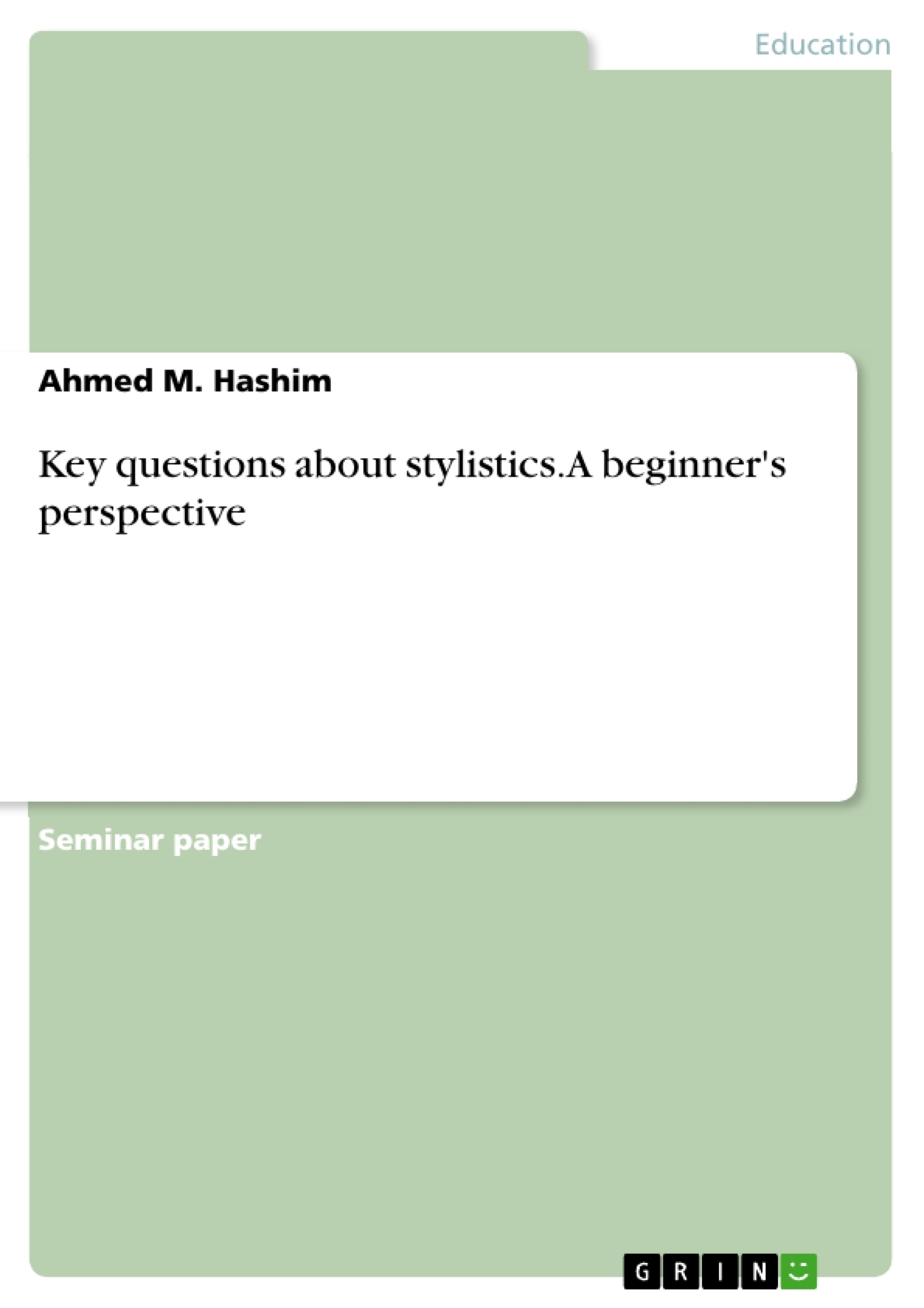This paper deals with the question "what is stylistics?" from a beginner's perspective that asks questions and tries to find answers.
This paper discusses the two main types of stylistics and how each type deals with the literary text. It also displays the history of stylistics, how this method came into existence and its purpose and aims. At the end, it explains some of the key terms and devices used is stylistic analysis briefly, providing the definition for each device and term.
Table of Contents
- What is Stylistics?
- A brief history of stylistics
- The purpose of stylistics
- Some of the key terms and devices used in stylistic analysis
- Conclusion
Objectives and Key Themes
This paper aims to provide a beginner-friendly introduction to stylistics, exploring its definition, history, purpose, and key analytical tools. It differentiates between linguistic and literary stylistics and briefly touches upon their applications.
- Definition and categorization of stylistics
- Historical development of stylistics
- The purpose and applications of stylistic analysis
- Key terms and devices in stylistic analysis
- The relationship between stylistics and linguistics
Chapter Summaries
What is Stylistics?: This chapter begins by defining stylistics, acknowledging its elusive nature and common misinterpretations. It introduces the two main branches: linguistic stylistics (general stylistics) and non-linguistic stylistics (literary stylistics). Linguistic stylistics focuses on how meaning is created through language, employing linguistic models for analysis across various text types. Non-linguistic stylistics, conversely, evaluates the aesthetic and prescriptive aspects of language use, often in literary works, considering both reader impression and adherence to stylistic rules. The chapter highlights the broadening scope of stylistic analysis beyond literary texts to encompass areas like advertising and film.
A brief history of stylistics: This chapter traces the origins of stylistics as an academic discipline, connecting its 20th-century emergence to earlier roots in Aristotle's Rhetoric. It discusses the influence of New Criticism, Russian Formalism, and Czech Structuralism on the development of stylistic analysis. The chapter emphasizes the initial focus on poetic analysis, particularly phonetic and grammatical structures, before stylistic methods expanded to encompass a wider range of texts and media.
Keywords
Stylistics, linguistic stylistics, literary stylistics, stylistic analysis, literary criticism, language analysis, meaning-making, text analysis, aesthetic evaluation, linguistic models, rhetoric.
Frequently Asked Questions: A Comprehensive Language Preview
What is this document about?
This document provides a comprehensive overview of stylistics, including its definition, history, purpose, and key analytical tools. It covers both linguistic and literary stylistics and offers chapter summaries and keywords for better understanding.
What are the key topics covered in the document?
The main topics include: the definition and categorization of stylistics; the historical development of stylistics, tracing its origins and influences; the purpose and applications of stylistic analysis across various text types; key terms and devices used in stylistic analysis; and the relationship between stylistics and linguistics.
What is the difference between linguistic and literary stylistics?
Linguistic stylistics (general stylistics) focuses on how meaning is created through language, using linguistic models to analyze various texts. Literary stylistics (non-linguistic stylistics) evaluates the aesthetic and prescriptive aspects of language use, particularly in literary works, considering both reader impression and adherence to stylistic rules.
What is the purpose of stylistic analysis?
Stylistic analysis aims to understand how language creates meaning and effects in different contexts. It can be used to analyze literary texts, advertising, film, and other forms of communication to uncover underlying structures and interpret their impact.
What are some key terms and devices used in stylistic analysis?
Key terms and devices include, but aren't limited to: rhetorical devices, grammatical structures, phonetic features, and other linguistic elements that contribute to meaning and effect within a given text.
What is the historical background of stylistics?
The document traces the origins of stylistics as an academic discipline, connecting its 20th-century emergence to earlier roots in Aristotle's Rhetoric and highlighting the influence of New Criticism, Russian Formalism, and Czech Structuralism.
What are the chapter summaries about?
The chapter summaries provide detailed overviews of the key concepts introduced in each section of the document. They explain the definition of stylistics, its history, its purpose and applications, and the key terms and techniques used in analysis.
What are the keywords associated with this document?
Keywords include: Stylistics, linguistic stylistics, literary stylistics, stylistic analysis, literary criticism, language analysis, meaning-making, text analysis, aesthetic evaluation, linguistic models, rhetoric.
Who is the intended audience of this document?
This document is intended to be a beginner-friendly introduction to stylistics, suitable for students and anyone interested in learning about the field.
Where can I find more information on stylistics?
Further research can be conducted using the keywords provided and by exploring scholarly articles and books on stylistics and related fields of linguistics and literary criticism.
- Arbeit zitieren
- Ahmed M. Hashim (Autor:in), 2017, Key questions about stylistics. A beginner's perspective, München, GRIN Verlag, https://www.hausarbeiten.de/document/377183


